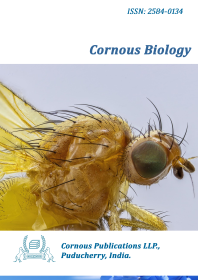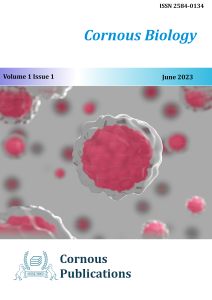

Food crop yield, quality, and tolerance mechanisms to biotic and abiotic factors are important aspects that contribute to food security. To feed about 10 billion people by 2050, high yielding climate-resilient rice cultivars with good grain quality must be created more quickly. Yield and quality, along with stress tolerance traits of the rice crop, have been improved by adopting various methods. Among these, in recent years, the yield of the crop has been improved marginally by utilizing conventional breeding methods. Mutation breeding is an important pathway that has created many novel variations and contributed towards isolating new high yielding genotypes in the rice crop. Forward and reverse genetic protocols have been engaged for the identification of genomic variants in conventional mutation breeding to characterize the novel variants to convert as functional markers for the development of new improved varieties. Generation of desired mutations in the desirable region of the genome of the crops is highly tedious through conventional breeding methods such as random mutagenesis since the gene manipulations happen randomly while the mutagenesis is done using physical and chemical mutagens. Also, it requires large mutant plant populations to isolate the desired mutants and mutations. The advancement of CRISPR/Cas9 genome editing technology rapidly replaces conventional random mutagenesis technologies, has the ability to multiplex genome editing to create novel variations for crop improvement programs, and reduces the time duration required for trait based crop improvement programs. In this review, significant gene manipulations employed through CRISPR/Cas9 for rice crop improvement in terms of yield and biotic and abiotic stress tolerance are discussed.
CRISPR/Cas9, crop improvement, mutagenesis, mutations, genome editing, rice
Alam, M. S., Kong, J., Tao, R., Ahmed, T., Alamin, M., Alotaibi, S. S., ... & Xu, J. H. (2022). CRISPR/Cas9 mediated knockout of the OsbHLH024 transcription factor improves salt stress resistance in rice (Oryza sativa L.). Plants, 11(9), 1184.
Blum, A. (2009). Effective use of water (EUW) and not water-use efficiency (WUE) is the target of crop yield improvement under drought stress. Field crops research, 112(2-3), 119-123.
Brennan, J. P., & Malabayabas, A. (2011). International Rice Research Institute's contribution to rice varietal yield improvement in South-East Asia.
Clarke, J. L., & Zhang, P. (2013). Plant biotechnology for food security and bioeconomy. Plant Molecular Biology, 83, 1-3.
Denardin, L. G. D. O., Carmona, F. D. C., Veloso, M. G., Martins, A. P., de Freitas, T. F. S., Carlos, F. S., ... & Anghinoni, I. (2019). No-tillage increases irrigated rice yield through soil quality improvement along time. Soil and Tillage Research, 186, 64-69.
Jain, P., Singh, P. K., Kapoor, R., Khanna, A., Solanke, A. U., Krishnan, S. G., ... & Sharma, T. R. (2017). Understanding host-pathogen interactions with expression profiling of NILs carrying rice-blast resistance Pi9 gene. Frontiers in Plant Science, 8, 93.
Khush, G. (2003). Productivity improvements in rice. Nutrition reviews, 61(suppl_6), S114-S116.
Kim, M. S., Ko, S. R., Jung, Y. J., Kang, K. K., Lee, Y. J., & Cho, Y. G. (2023). Knockout Mutants of OsPUB7 Generated Using CRISPR/Cas9 Revealed Abiotic Stress Tolerance in Rice. International Journal of Molecular Sciences, 24(6), 5338.
Kim, Y. A., Moon, H., & Park, C. J. (2019). CRISPR/Cas9-targeted mutagenesis of Os8N3 in rice to confer resistance to Xanthomonas oryzae pv. oryzae. Rice, 12(1), 1-13.
Li, J., Zhang, M., Yang, L., Mao, X., Li, J., Li, L., ... & Zou, D. (2021). OsADR3 increases drought stress tolerance by inducing antioxidant defense mechanisms and regulating OsGPX1 in rice (Oryza sativa L.). The Crop Journal, 9(5), 1003-1017.
Liao, S., Qin, X., Luo, L., Han, Y., Wang, X., Usman, B., ... & Li, R. (2019). CRISPR/Cas9-induced mutagenesis of semi-rolled leaf1, 2 confers curled leaf phenotype and drought tolerance by influencing protein expression patterns and ROS scavenging in rice (Oryza sativa L.). Agronomy, 9(11), 728.
Mackill, D. J., Ismail, A. M., Pamplona, A. M., Sanchez, D. L., Carandang, J. J., & Septiningsih, E. M. (2010). Stress tolerant rice varieties for adaptation to a changing climate. Crop, Environment & Bioinformatics, 7, 250-259.
Milovanovic, V., & Smutka, L. (2017). Asian countries in the global rice market. ACTA Universitatis agriculturae et silviculturae mendelianae Brunensis, 65(2), 679-688.
Park, J. R., Kim, E. G., Jang, Y. H., Jan, R., Farooq, M., Ubaidillah, M., & Kim, K. M. (2022). Applications of CRISPR/Cas9 as new strategies for short breeding to drought gene in rice. Frontiers in Plant Science, 13.
Peng, S., Khush, G. S., Virk, P., Tang, Q., & Zou, Y. (2008). Progress in ideotype breeding to increase rice yield potential. Field Crops Research, 108(1), 32-38.
Romero, F. M., & Gatica-Arias, A. (2019). CRISPR/Cas9: development and application in rice breeding. Rice Science, 26(5), 265-281.
Ryoo, N., Yu, C., Park, C. S., Baik, M. Y., Park, I. M., Cho, M. H., ... & Jeon, J. S. (2007). Knockout of a starch synthase gene OsSSIIIa/Flo5 causes white-core floury endosperm in rice (Oryza sativa L.). Plant cell reports, 26, 1083-1095.
Santosh Kumar, V. V., Verma, R. K., Yadav, S. K., Yadav, P., Watts, A., Rao, M. V., & Chinnusamy, V. (2020). CRISPR-Cas9 mediated genome editing of drought and salt tolerance (OsDST) gene in indica mega rice cultivar MTU1010. Physiology and Molecular Biology of Plants, 26, 1099-1110.
Seo, D. H., Seomun, S., Choi, Y. D., & Jang, G. (2020). Root development and stress tolerance in rice: the key to improving stress tolerance without yield penalties. International Journal of Molecular Sciences, 21(5), 1807.
Shan, Q., Wang, Y., Li, J., & Gao, C. (2014). Genome editing in rice and wheat using the CRISPR/Cas system. Nature protocols, 9(10), 2395-2410.
Távora, F. T., Meunier, A. C., Vernet, A., Portefaix, M., Milazzo, J., Adreit, H., ... & Mehta, A. (2022). CRISPR/Cas9-Targeted knockout of rice susceptibility genes OsDjA2 and OsERF104 reveals alternative sources of resistance to Pyricularia oryzae. Rice Science, 29(6), 535-544.
Tianshun, Z. H. O. U., Dong, Y. U., Ling, L. I. U., Ning OUYANG, G. Y., Meijuan, D. U. A. N., & Dingyang, Y. U. A. N. (2021). CRISPR/Cas9-mediatedEditing of AFP1Improves Rice Stress Tolerance. Chinese Journal OF Rice Science, 35(1), 11.
Tripathi, A. K., Pareek, A., Sopory, S. K., & Singla-Pareek, S. L. (2012). Narrowing down the targets for yield improvement in rice under normal and abiotic stress conditions via expression profiling of yield-related genes. Rice, 5, 1-12.
Wang, S., Li, S., Liu, Q., Wu, K., Zhang, J., Wang, S., ... & Fu, X. (2015). The OsSPL16-GW7 regulatory module determines grain shape and simultaneously improves rice yield and grain quality. Nature genetics, 47(8), 949-954.
Wang, W., Wang, W., Pan, Y., Tan, C., Li, H., Chen, Y., ... & Ma, C. (2022). A new gain-of-function OsGS2/GRF4 allele generated by CRISPR/Cas9 genome editing increases rice grain size and yield. The Crop Journal, 10(4), 1207-1212.
Xing, Y. & Zhang, Q. (2010). Genetic and molecular bases of rice yield. Annu. Rev. Plant. Biol., 61, 421–442.
Yue, E., Cao, H., & Liu, B. (2020). OsmiR535, a potential genetic editing target for drought and salinity stress tolerance in Oryza sativa. Plants, 9(10), 1337.
Zafar, K., Khan, M. Z., Amin, I., Mukhtar, Z., Yasmin, S., Arif, M., ... & Mansoor, S. (2020). Precise CRISPR-Cas9 mediated genome editing in super basmati rice for resistance against bacterial blight by targeting the major susceptibility gene. Frontiers in plant science, 11, 575.
Zafar, K., Sedeek, K. E., Rao, G. S., Khan, M. Z., Amin, I., Kamel, R., ... & Mahfouz, M. M. (2020). Genome editing technologies for rice improvement: progress, prospects, and safety concerns. Frontiers in Genome Editing, 2, 5.
Zeng, X., Luo, Y., Vu, N. T. Q., Shen, S., Xia, K., & Zhang, M. (2020). CRISPR/Cas9-mediated mutation of OsSWEET14 in rice cv. Zhonghua11 confers resistance to Xanthomonas oryzae pv. oryzae without yield penalty. BMC Plant Biology, 20(1), 1-11.
Zeng, Y., Wen, J., Zhao, W., Wang, Q., & Huang, W. (2020). Rational improvement of rice yield and cold tolerance by editing the three genes OsPIN5b, GS3, and OsMYB30 with the CRISPR–Cas9 system. Frontiers in plant science, 10, 1663.
Zhang, A., Liu, Y., Wang, F., Li, T., Chen, Z., Kong, D., ... & Luo, L. (2019). Enhanced rice salinity tolerance via CRISPR/Cas9-targeted mutagenesis of the OsRR22 gene. Molecular breeding, 39, 1-10.
Zhang, X. Q., Hou, P., Zhu, H. T., Li, G. D., Liu, X. G., & Xie, X. M. (2013). Knockout of the VPS22 component of the ESCRT-II complex in rice (Oryza sativa L.) causes chalky endosperm and early seedling lethality. Molecular biology reports, 40, 3475-3481.
Zhou, Y., Xu, S., Jiang, N., Zhao, X., Bai, Z., Liu, J., ... & Yang, Y. (2022). Engineering of rice varieties with enhanced resistances to both blast and bacterial blight diseases via CRISPR/Cas9. Plant Biotechnology Journal, 20(5), 876-88.
